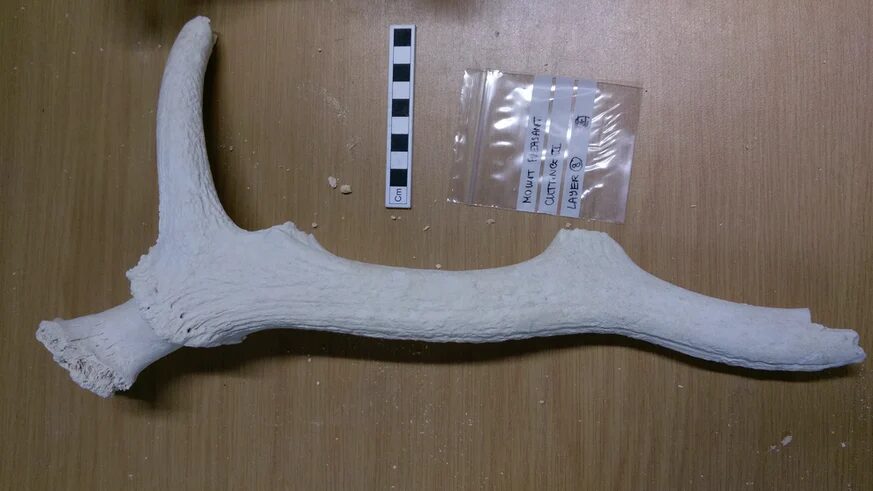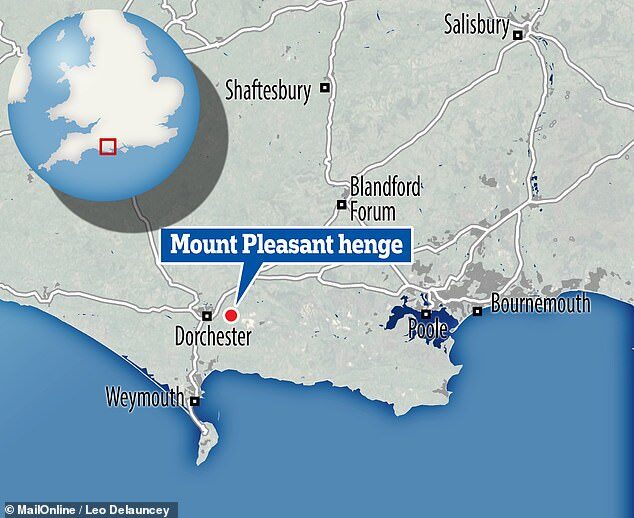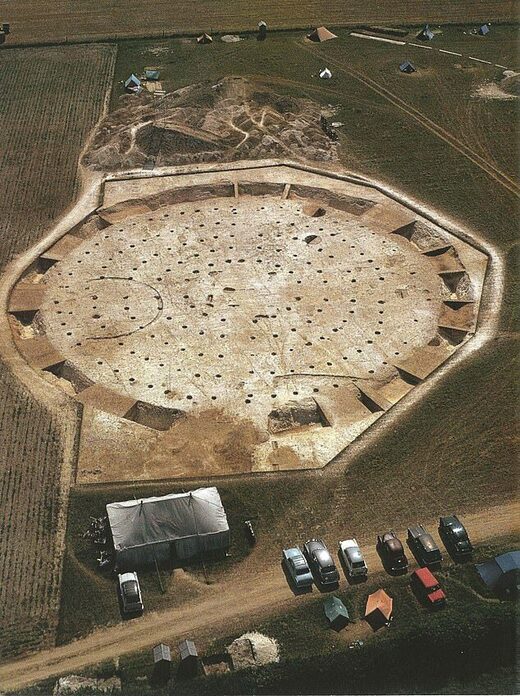
Academics used the latest scientific methods to re-examine the remains of the Mount Pleasant 'mega henge', a large prehistoric enclosure, located just outside Dorchester in Dorset. This is the first time accurate dating has been obtained for the major late Neolithic monument and offers new insights into the incredible speed at which construction took place.
Inside Mount Pleasant henge was a large, fenced enclosure and a complex concentric timber and stone monument. On top of the bank was built a great mound. The new analysis shows that all these different elements were completed in less than 125 years - much less time than previously thought. The data shows the site was built only 150 years or so before the arrival of new people from continental Europe, who brought the first metals and different pottery as well as new ideas and religious beliefs.
Comment: It was more than simply the 'arrival' of new people, for the most part the arrival of the Beaker peoples entirely replaced the DNA of those living there at the time.
Built around 2500BC, Mount Pleasant is one of five known mega-henges in southern England of the same period. Other sites include Marden, Durrington Walls near Stonehenge, Avebury, which are all in Wiltshire, and Knowlton in Dorset. Stonehenge was also built at this time. The henges were significant ceremonial sites where people probably gathered for feasting and rituals, sometimes travelling over long distances to get there.
Susan Greaney, a PhD student at Cardiff University's School of History, Archaeology and Religion, said: "This new dating really helps us understand the pivotal 2,500 BC period. The picture that is emerging is that an explosion in building activity was behind these large and labour-intensive monuments being constructed across southern England, and perhaps also further afield.
"The building of Mount Pleasant would have involved a huge number of people - digging out the enormous ditches with simple tools like antler picks. Although the construction of the various parts took place in several phases, with successive generations working on its construction, all the work was concentrated within just over a century."
Comment: Experiments in building replica megalithic monuments in our own time have proven that it's impossible that the builders had only primitive technology available. The fact is we still don't know how they built them. Even with modern tools shifting these massive blocks, across vast distances, into such precise positions is difficult, and sometimes it's just not possible.

Greaney said: "What's still not clear is why these monuments were built in the first place. Were people building these monuments as a 'last hurrah' because they could see change coming? Or did the effort and labour of building these monuments lead to a rebellion, a collapse in belief in the leaders or the religion, that created a vacuum in which new people could come in from the continent? Part of the central stone monument at Mount Pleasant appears to have been broken up at this time - was it destroyed during a time of unrest?"
Dr Peter Marshall, of Historic England said: "This research shows the importance of archaeological collections stored in museums. Even though the site was excavated in 1970-1, it has still been possible to go back to the archive and apply new scientific techniques to old material.
"As archaeological practices evolve, the value of these museum collections and the importance of their long-term preservation cannot be under-estimated."
Tempo of a Mega-henge: A New Chronology for Mount Pleasant, Dorchester, Dorset, is published in Proceedings of the Prehistoric Society and available to view here.




They've got a way with words, these archaeologists, eh? Sure, they were a civilisation with super-advanced mathematics, but they had a weird sense of humour, so for a bit of a wheeze they decided to embark on their 'neolithic construction boom' using simple tools like antler picks.